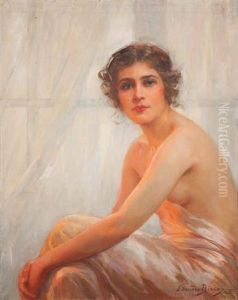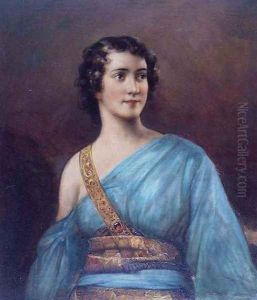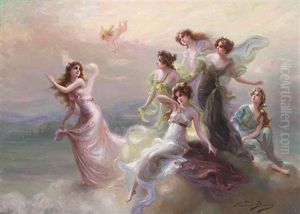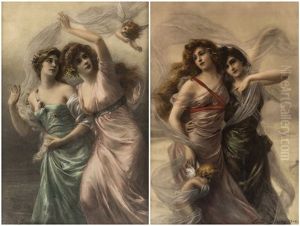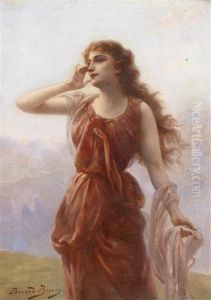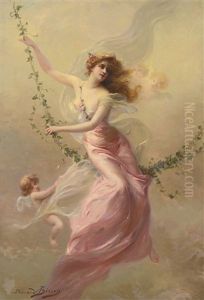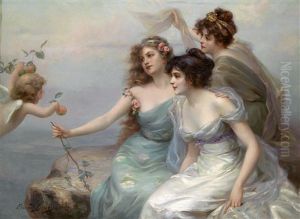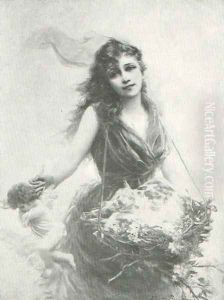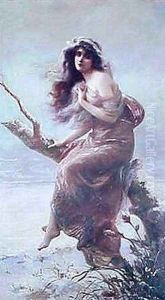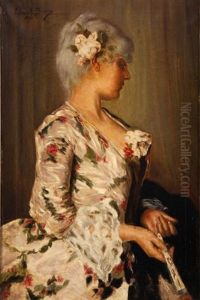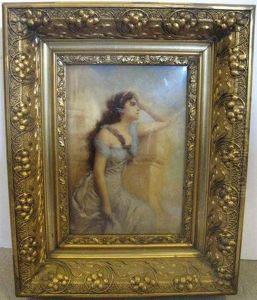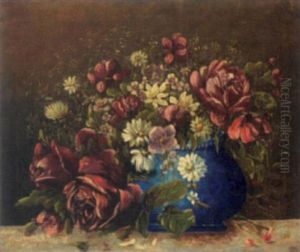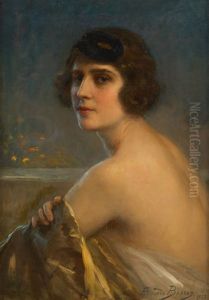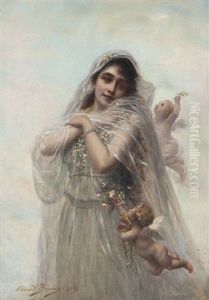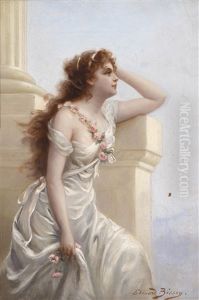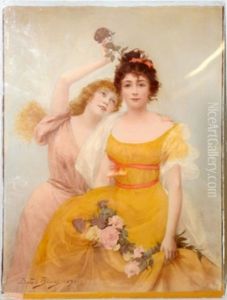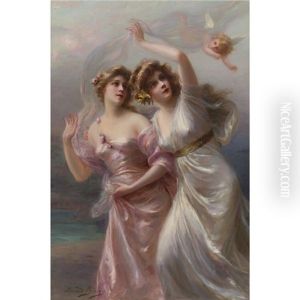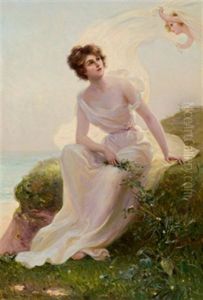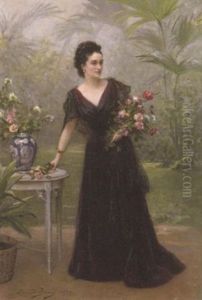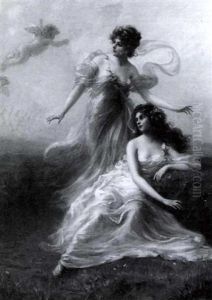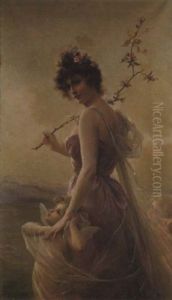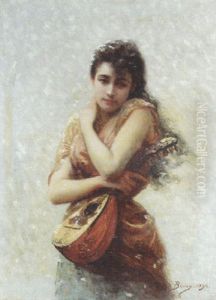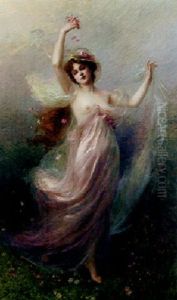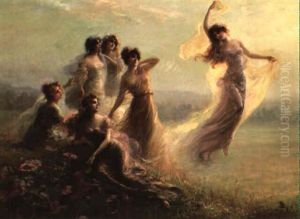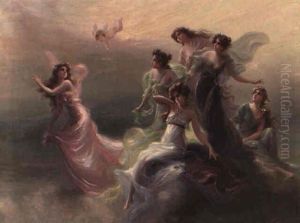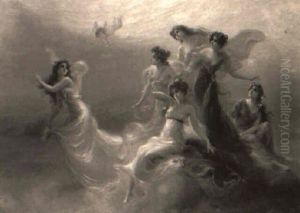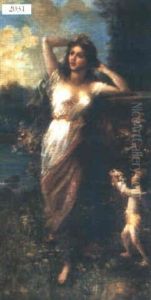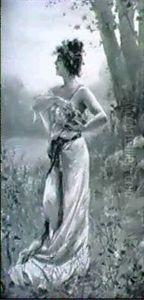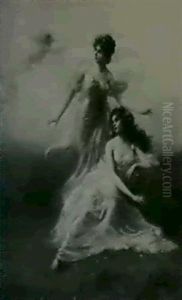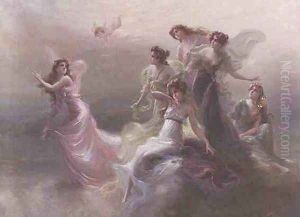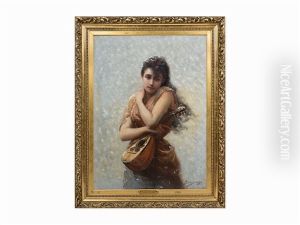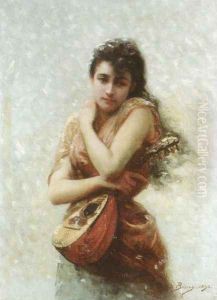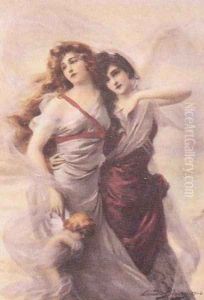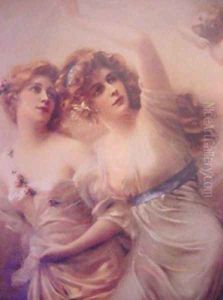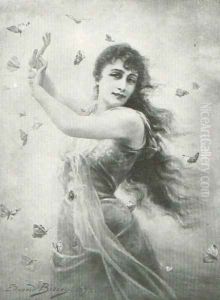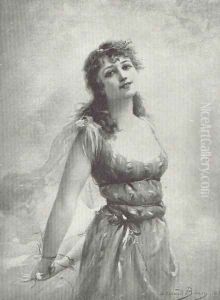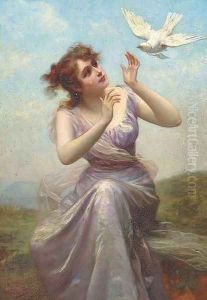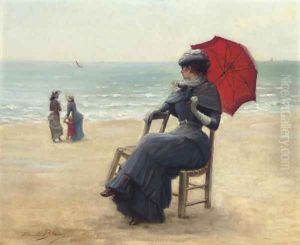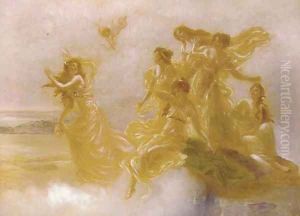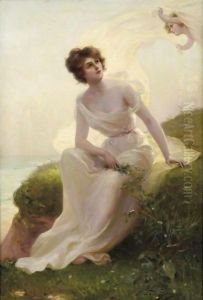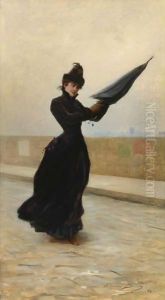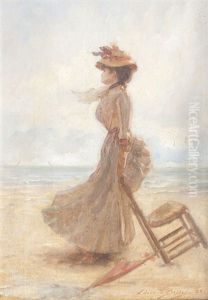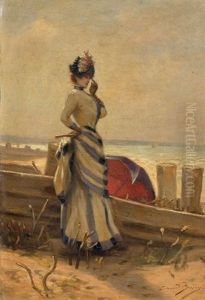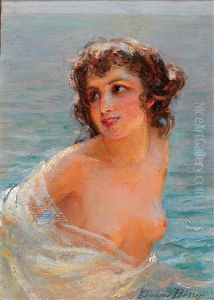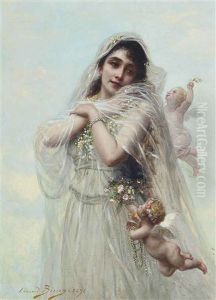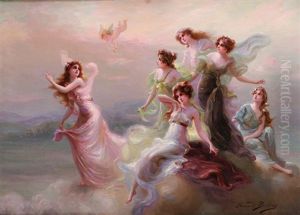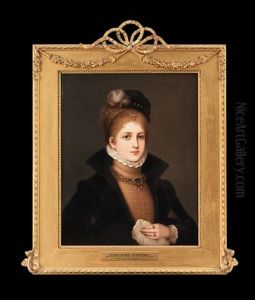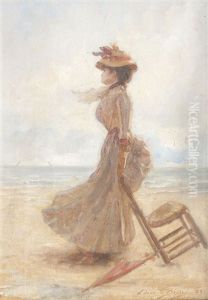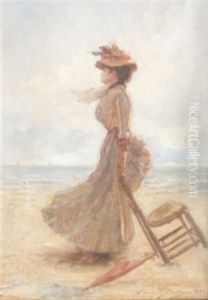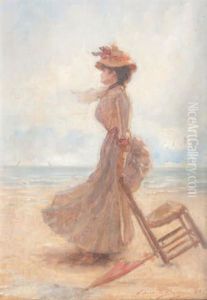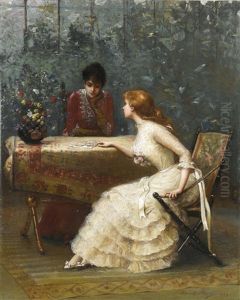Edouard Bisson Paintings
Edouard Bisson was a French painter known for his romantic and allegorical paintings, deeply rooted in the Academic art tradition that was prevalent during his time. Born on December 15, 1856, in Paris, France, Bisson was part of the wave of artists who adhered to the strict principles of academic painting, emphasizing classical themes, meticulous techniques, and a polished finish. His work often depicted beautiful women, cherubs, and allegorical scenes, suffused with a dreamy and ethereal quality that was highly popular among the art collectors of his era.
Bisson's artistic journey was marked by his education at the École des Beaux-Arts in Paris, where he studied under influential teachers of the time. This period was instrumental in shaping his style, which combined the ideal beauty of classical art with a soft, almost mystical expressionism that became his signature. His paintings, characterized by their vibrant color palette and exquisite detail, garnered him recognition and awards at various exhibitions, including the prestigious Paris Salon, an annual art exhibition established by the French Academy of Fine Arts.
Throughout his career, Bisson remained committed to the academic style, even as the art world began to shift towards Impressionism and Post-Impressionism. His dedication to traditional themes and techniques made him a favorite among conservative art patrons, but also meant that he was increasingly seen as anachronistic in the face of modernist movements.
Despite this, Edouard Bisson's work continued to be celebrated for its beauty and craftsmanship. He was awarded the Legion of Honour, France's highest order of merit for military and civil merits, in recognition of his contribution to French art. Bisson's paintings today are considered emblematic of the late 19th-century academic tradition, offering a glimpse into the aesthetic values and cultural ideals of his time.
Bisson passed away on August 11, 1939, leaving behind a legacy that, while perhaps overshadowed by the avant-garde movements that followed, remains a testament to the enduring appeal of classical beauty and artistic skill. His works are held in private collections and museums around the world, continuing to enchant and inspire those who appreciate the artistry of a bygone era.
